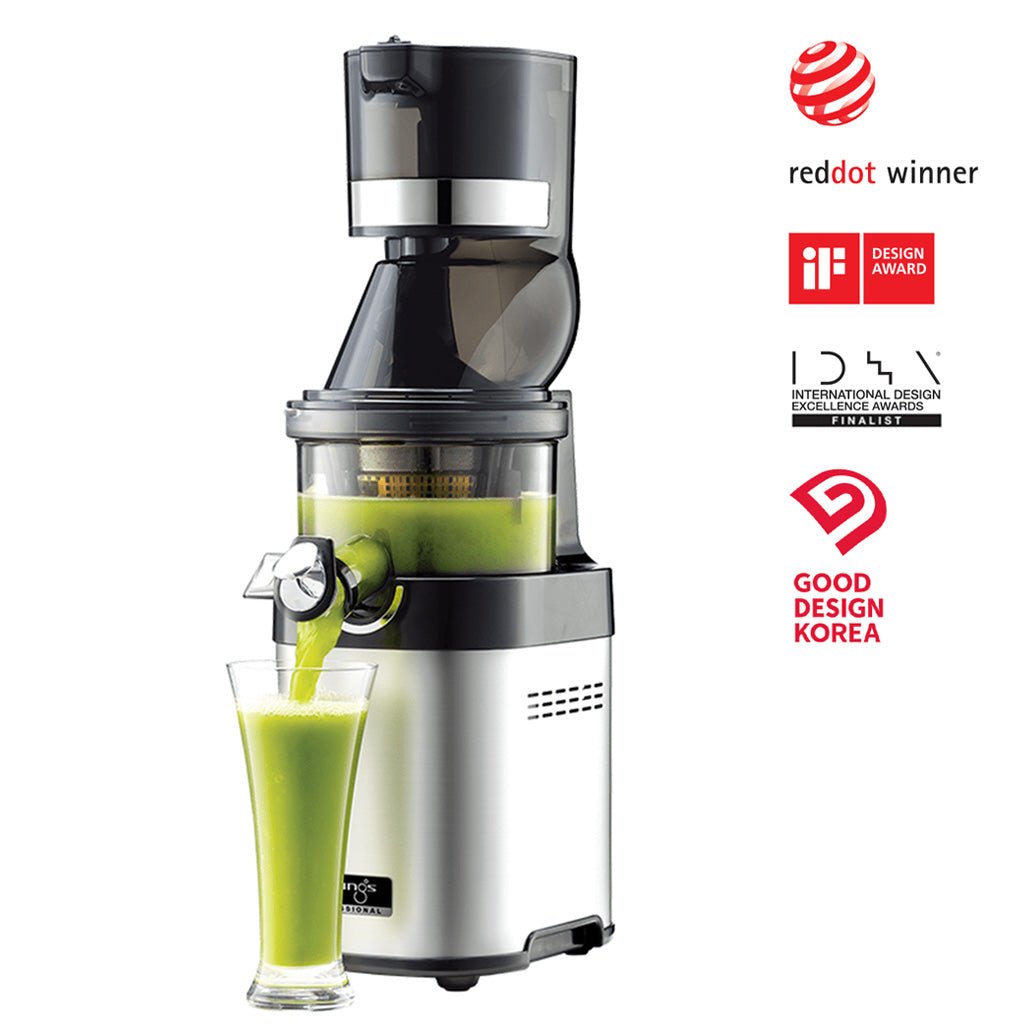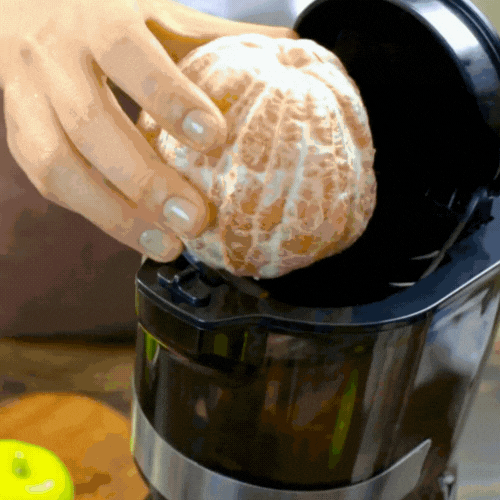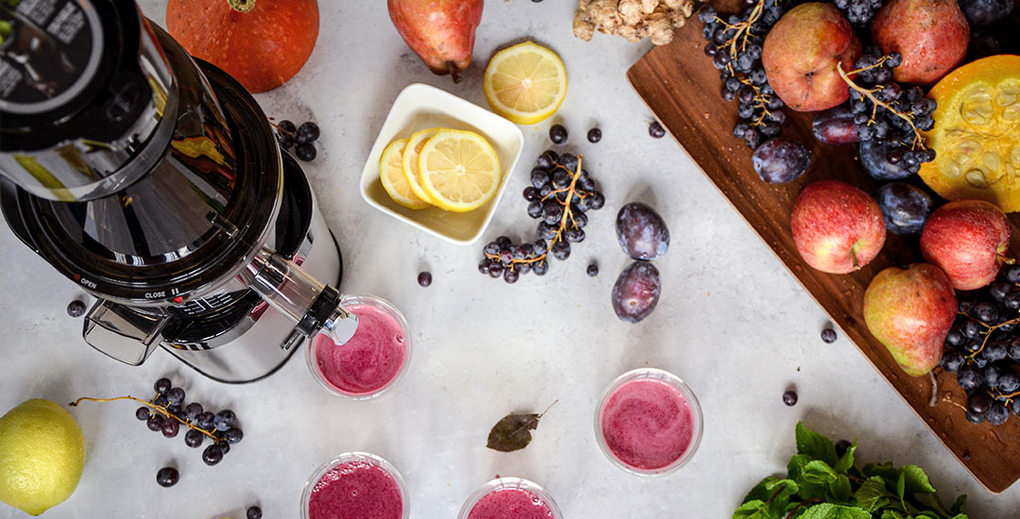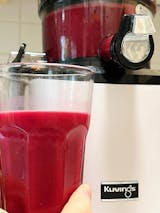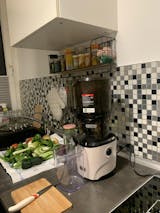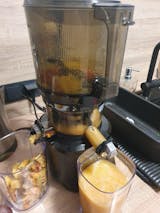Juice ginger and turmeric
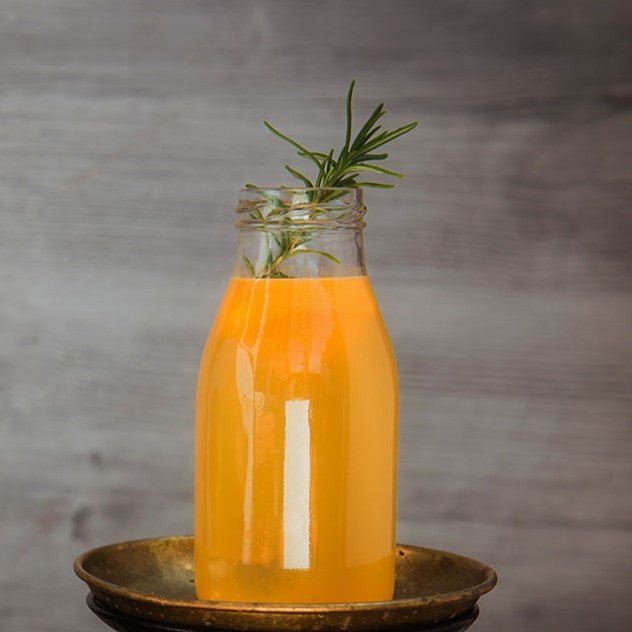

How to juice ginger and turmeric properly – without clogging the juicer
Ginger and turmeric naturally contain a lot of fiber, which can quickly lead to constipation when juicing. Here's how to juice these root vegetables easily and without any hassle!
1. The fresher, the better
As with all ingredients, fresh is best!
Ginger and turmeric become drier and more stringy over time, making juicing more difficult. Cut pieces, in particular, quickly lose their juiciness upon exposure to air.
Tip: Store ginger and turmeric airtight in the refrigerator—for example, in airtight containers or wrapped in plastic wrap or a paper towel. When shopping, look for plump, heavy roots—they contain a lot of juice and are easier to process.
2. Whole or sliced?
If you only use a small piece of ginger or turmeric (e.g. 2-5 cm) for a fresh kick, you don't need to cut it.
However, if you're using larger quantities of ginger, cut it into pieces about 2 cm in size. This makes it easier to feed into the juicer.
Pro tip: Cut ginger across the grain (i.e., along the lines on the peel). This will help you break down the tough fibers more easily—even if it requires a bit more force.
Turmeric is finer and less fibrous, so you usually don't need to chop it. If you do, use the same method as for ginger.
3. Shell – leave it on or peel it?
Good news: You don't have to peel ginger and turmeric!
The peel contains many valuable polyphenols, antioxidants, and anti-inflammatory substances. It also saves you the hassle of peeling, especially the many small corners.
- Thin shell does not clog the juicer
- Shell shows the grain direction for cutting
- Turmeric peel protects your hands from stains
If you still want to peel it, it's best to use a spoon for ginger—this will help you get into all the nooks and crannies without losing too much flesh. For turmeric, a vegetable peeler is sufficient, ideally with gloves to avoid stains.

4. Juice turmeric with lemon
Turmeric can permanently discolor your juicer—often orange/yellow on the plastic parts and greenish/blue on the auger.
The reason for this is curcumin, which doesn't dissolve well in water. A tried-and-true tip: Juice turmeric with lemon! The citric acid helps prevent color residue and has a slight bleaching effect.
5. Layer ingredients cleverly
Place the ginger and turmeric at the very bottom of your juicer's feed chute. Follow with larger, firmer ingredients—they'll help push the fibrous pieces down and prevent clogging.
6. Use the back button
Does your juicer have a reverse function? Use it!
Press the reverse button for about 5-10 seconds to loosen any stuck pieces. Then press the forward button again. You can repeat this process several times—this often saves you from having to completely disassemble the juicer during juicing.
7. Clean your juicer properly
Although it may be tempting, please don't put it in the dishwasher! The heat can deform delicate parts.
Hand wash your juicer immediately after use—this is the easiest way to remove residue and stains. For stubborn stains, a cleaning scrub made from dish soap, baking soda, vinegar, lemon juice, and water will help. Let the parts soak in it for a few hours or overnight.
For the press screw, you can apply a little cooking oil to a cloth and rub the discolored areas with it. Then rinse thoroughly with dish soap and water.
This post was published with permission from www.kuvingsusa.com.


![[ Kuvings ausgezeichnet ] Präsidentenauszeichnung für regionale Innovation in Südkorea - Kuvings Deutschland](http://kuvings.de/cdn/shop/articles/kuvings-ausgezeichnet-prasidentenauszeichnung-fur-regionale-innovation-in-sudkorea-1602687.jpg?v=1762447229&width=1080)
![[ Kuvings x SV Werder Bremen ] Ein Tag voller gesunder Energie - Kuvings Deutschland](http://kuvings.de/cdn/shop/articles/kuvings-x-sv-werder-bremen-ein-tag-voller-gesunder-energie-5645597.jpg?v=1761784399&width=1080)
![[ World.einnews ] Kuvings – Premium-Entsafter, zehn Jahre Kundenzufriedenheit - Kuvings Deutschland](http://kuvings.de/cdn/shop/articles/worldeinnews-kuvings-premium-entsafter-zehn-jahre-kundenzufriedenheit-8707310.jpg?v=1759943578&width=1080)




